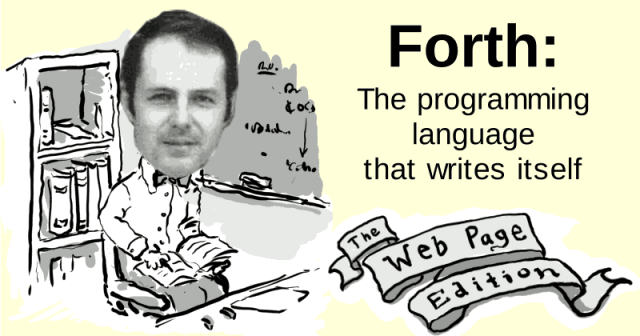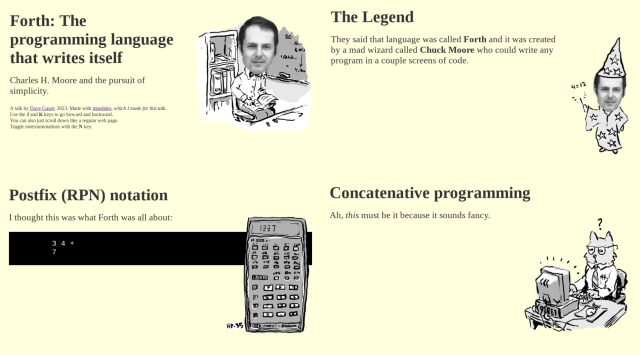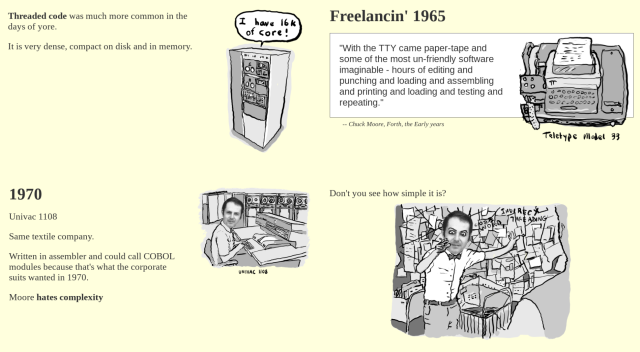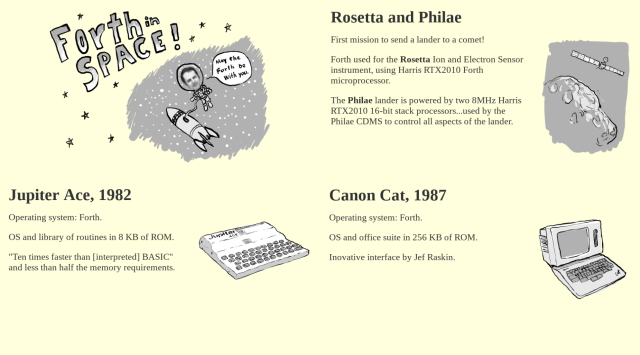Search
Items tagged with: forth
Je viens de publier une nouvelle fiction interactive programmée en #FORTH :
farvardin.itch.io/voie-de-gara…
#ConFI2026 #SpeedIF #fictioninteractive
Livre-jeu et FORTH
Lorsque j'ai développé le système de création de documents et de livre-jeux textallion, il y a déjà une quinzaine d'années, vers 2010, mon but était de pouvoir exporter dans divers formats de...farvardin (itch.io)
I'm excited to announce the completion of "Forth: The programming language that writes itself: The Web Page (Charles H. Moore and the pursuit of simplicity.)" 
Recommended for fans of: historical computing, programming languages, and space technology.
ratfactor.com/forth/the_progra…
#forth #RetroComputing #history

Forth: The programming language that writes itself: The Web Page
An exploration of the evolution and meaning of the Forth programming language and its context in history.ratfactor.com
I would apologize for posting what at first appears to be another "tech toot"...but since I churned out almost 40 drawings for this talk on the Forth programming language, I don't feel bad about it at all. Here's the slides:
ratfactor.com/forth/forth_talk…
I happen to know some of you enjoy space ships, calculators, and old computers as much as I do.




